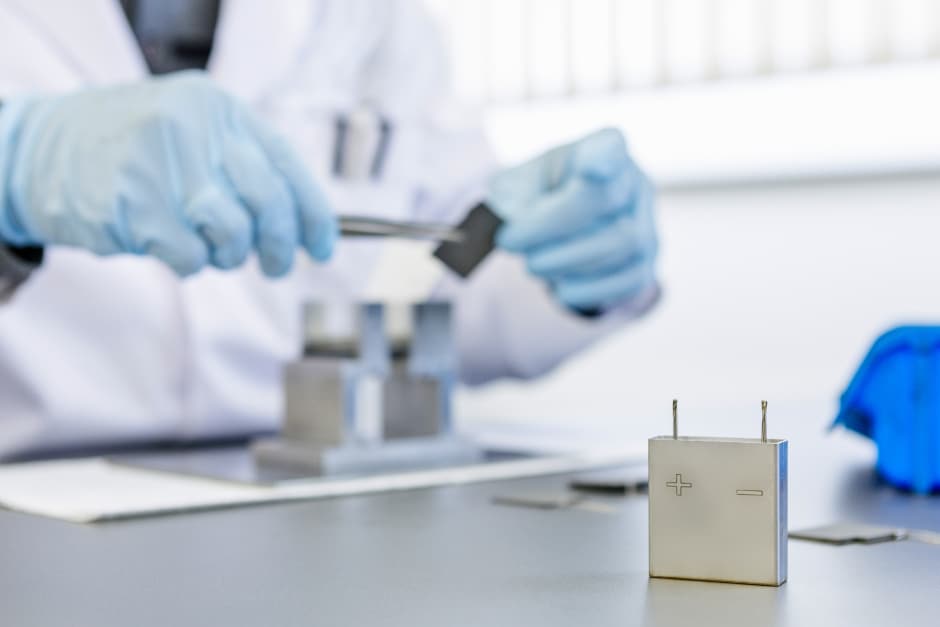
The device is the world’s first 1000Wh/kg rechargeable battery, according to its developer Innolith, based in Basel, Switzerland.
The Innolith Energy Battery, which does not contain expensive exotic materials, is based on an inorganic electrolyte, according to the company’s chairman, Alan Greenshields.
Unlike the organic electrolyte in conventional lithium-ion batteries used in electric vehicles, this inorganic electrolyte is non-flammable. In this way it could eliminate the main cause of battery fires that plague electric vehicle manufacturers, Greenshields said.
“The core of what we’re doing is to [eliminate] the undesirable properties of lithium-ion batteries, in that they catch fire, or even explode, and don’t last very long,” he said.
In traditional intercalation-based batteries, the lithium ions shuttle back and forwards between the two electrodes, but do not chemically react with the material, said Greenshields. Instead the lithium ions slide into gaps within the crystalline structure.
“When you charge a lithium-ion battery, you force lithium ions out of the positive electrode, through the electrolyte and they intercalate into the negative electrode, and when you discharge it the reverse happens,” he said.
In a conversion reaction system, in contrast, the lithium reacts with a material at the electrode to form a compound, storing energy in the process. When this compound dissolves into its constituent parts it releases energy again, said Greenshields.
“As a result, at the electrode level, you have at least ten times higher [energy] storage per unit of mass, because you’re using an actual chemical reaction rather than the intercalation storage of lithium ions,” he said.
Innolith is planning to commercialise the high energy density battery through an initial pilot production in Germany, followed by licensing partnerships with battery and car companies, said Sergey Buchin, CEO of Innolith.
The company anticipates development and commercialisation of the battery will take between three to five years.
“We believe this battery will be suitable for all sorts of transport applications, including electric cars and buses, and with its high energy density we can also use it in drones and other aircraft,” said Buchin.
The company has already developed a grid-scale non-flammable, inorganic rechargeable power battery, which is being used in the PJM grid in the US to provide fast frequency regulation services.




Poll: Should the UK’s railways be renationalised?
I think that a network inclusive of the vehicles on it would make sense. However it remains to be seen if there is any plan for it to be for the...